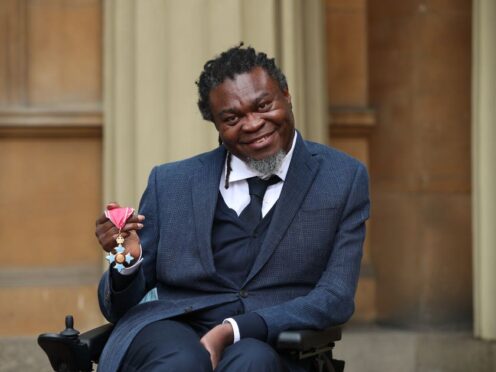Artist Yinka Shonibare has said he feels it is “fundamental” that art can be a space for society to reflect on the issues within the world.
The British Nigerian artist, famous for his Nelson’s Ship In A Bottle installation which stood on Trafalgar Square’s Fourth Plinth, is launching a new solo exhibition at the Serpentine South Gallery, his first in a London public institution in more than 20 years.
Running from April 12 to September 1, the exhibition, titled Suspended States, will showcase new and recent works by the artist.
Coming to Serpentine this April! An exhibition by British Nigerian artist Yinka Shonibare CBE @shonibarestudio
Titled ‘Suspended States’, this show marks a return to Serpentine for the artist – he first exhibited here back in 1992. pic.twitter.com/GPQnvzSOMd
— Serpentine (@SerpentineUK) February 28, 2024
Reflecting on his work, Shonibare said: “I think it’s very important to produce work that will make people reflect and think because we live in a social media world where everything’s really fast and people don’t really stop to think before they even write anything.
“And I think it’s fundamental that art can be a space that gives that opportunity for reflection.”
Among the works being displayed are pieces which explore how systems of power affect sites of refuge, debates on public statues, the ecological impact of colonialisation and the legacy of imperialism on conflict and consequential attempts at peace.
The exhibition also includes two new major installations titled Sanctuary City, which is comprised of miniature buildings representing places of refuge for persecuted and vulnerable groups, and The War Library, which consists of 5,000 books bound in Dutch wax print representing conflicts and peace treaties.
Discussing the themes within the exhibition, Shonibare said: “The work really does tackle some of the pressing issues of our time, issues around refuge, refugees, homelessness, the environment, ecology, conflicts, war.
“And, of course, the question of statues. A lot of people have been asking questions about statues recently and so the exhibition also kind of looks at that issue.”
He added that he feels it is important that his work is inspired by what happens around him, adding: “As an artist I’m just basically reflecting on that, reflecting on these very important things going on.”
The exhibition also marks a return for the artist, who first exhibited at Serpentine South in 1992 as a finalist in the Barclays Young Artist Award, and as a participant in Serpentine’s 2006 Interview Marathon.
